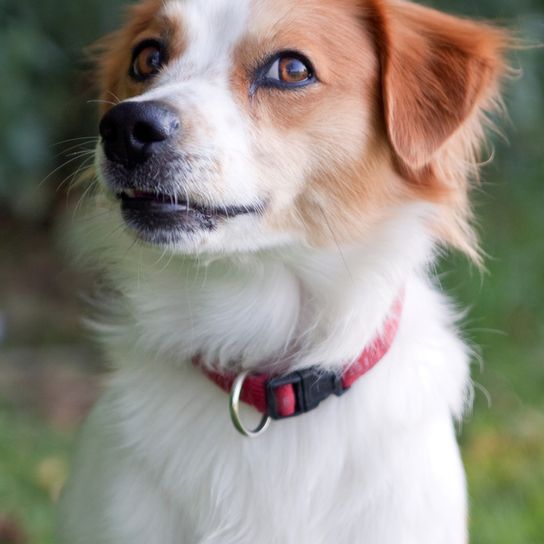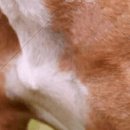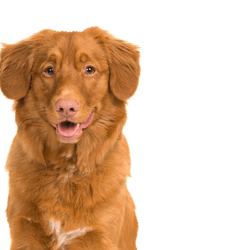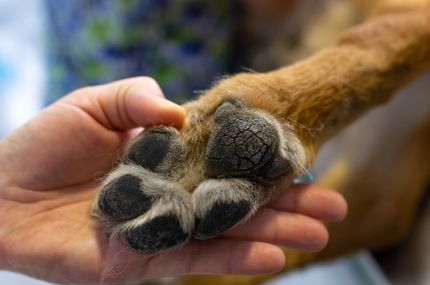
Kromfohrländer Breed description: Character & Co
Kromfohrländer
Facts & Origin
What is the origin of the Kromfohrländer?
The Kromfohrländer, affectionately called "Kromi", is a young German dog breed. Mrs Ilse Schleifenbaum was the first breeder. She mated the wire-haired fox terrier with a Grand Griffon Vendéen. The result was the Kromfohrländer. The term comes from the district "krom Fohr" near Siegen, where the lady used to live. In 1955, the breed was internationally recognised by the FCI. It belongs to the FCI group nine and forms the section ten. As you can see, there are only two dogs, which all Kromfohrländers descended from.




| Alternate Name | Kromi |
| Origin | Germany |
| Life expectancy | 12 - 15 years |
| Care requirements | low-maintenance |
| Activity level | average |
| FCI group | not recognised |
| AKC group | Foundation Stock Service |
| KC group | not recognised |
Attitude, character and temperament of the breed
What are the typical characteristics of the Kromfohrländer?
They are absolutely reliable family and companion dogs. They are always appreciated as dogs that are able to learn, adaptable and agile. Their hunting instinct is not very pronounced and can rather be described as an entertaining chase, which is easily managed with a little training. The Kromi quickly finds their reference person within the family, whom they will follow around everywhere they go. Towards strangers they are rather reserved until they get to know them better. Their behaviour towards children and other animals is completely unproblematic. The following applies here of course: The earlier they get accustomed to different environments, the less problems there will be in the future.
What do you have to consider in regards to Kromfohrländer keeping?
They can already be extremely dominant at puppy age. They will skillfully try to test your assertiveness. If they manage to overpower you once, they will want to take the lead from that point on. In order to avoid this, you should be very consistent but still empathetic from the beginning. Harsh treatment will not get you anywhere with them.
In any case, visit a puppy school so that your dog can make social contacts with other dogs and learn how to interact appropriately. Should problems arise later on, please contact a dog trainer who has experience with this breed.
In general the Kromfohrländer is a low-maintenance and adaptable companion. Whether apartment or house, with or without a garden, they will adapt quickly to your life situation and will always wait eagerly for new adventures.
Character
Usage


Health and breeding information
What are typical diseases of a Kromfohrländer?
Purebred dogs tend to develop autoimmune diseases. Autoimmune hemolytic anemia is particularly well known. The symptoms are varied and range from an inability to eat, diarrhea and vomiting to the destruction of red blood cells.
Furthermore, digital hyperkeratosis is increasingly observed. This is an excessive keratinization of the bales, which can also be painful.
Occasionally, dogs also develop epilepsy or cystinuria (formation of cystine crystals in the urine).
What is to be considered in regards to Kromfohrländer breeding?
Everyone wants a healthy and lively Kromfohrländer puppy. That is why various breeding clubs, such as the breeding club ProKromfohrländer e. V. and the Verein für Rauhaarige Kromfohrländer e. V. have thought about expanding the gene pool. For this reason, various single-crossing projects with other breeds have been started, although these are still being experimented on. This means that puppies of the first generation are bred from a purebred Kromfohrländer and a dog of another breed. In the second generation, a project dog of the first generation is again paired with a purebred Kromfohrländer. This goes on and on until the gene percentage of the Kromfohrländer is almost 100% again. The aim of these projects is to breed healthier dogs with less breed typical diseases.
This is probably in the interest of the Kromfohrländer breeders as well as all interested parties.
Particularities of the Kromfohrländer
It is known that more people want to buy a Kromfohrländer every year than there are breeders. You have to contact the breeder of your choice early on and you will usually end up on a so-called waiting list. It can easily take half a year until you can embrace your sweet companion.
But you may call yourselves lucky owners of such a rare breed.


Appearance and coat of the Kromfohrländer
There are two coat variations for the Kromfohrländer.
These include
- short rough hair and
- long straight hair.
Kromfohrländer with wire-hair show a dense rough coat and a beard. The hair length at the withers and on the back is longer and harder than on the sides. The tail draws a flag. They also have a short, soft undercoat.
On the other hand, Kromfohrländer with straight hair do not have a beard and overall their coat is softer. There are comparatively more rough-haired than smooth-haired types bred.
The basic colour of the coat is white for all types. Additionally they can have light brown, reddish brown or dark brown spots.
What is the average size of a Kromfohrländer?
The withers height lies between 38 cm and 46 cm. You can roughly compare your own knee height with the back height of a Kromis.
How much does a Kromfohrländer weigh?
Adult males weigh between 11 and 16 kg. Their female conspecifics are somewhat lighter weighing 9 - 14 kg.
What is the average life expectancy of a Kromfohrländer?
If kept in a species-appropriate way, they usually live between 12 and 15 years.
What are the breed characteristics of a Kromfohrländer?
They are medium sized dog, with their body length being slightly longer than their withers height. They have a slightly rounded skull with a lightly pronounced frontal furrow. Their chaps are close fitting and dark pigmented. It has a strong jaw counting 42 teeth. Their eyes are medium sized and the eye colour varies from medium to dark brown. Their high set "tilted ears" can be moved around. Their movement is smooth with a strong thrust, which they like to use for jumping.
| Fur length | medium |
| Fur | rough-haired |
| Ear shape | Tilt-ear |
| Tail | fanned out |
| Anatomy | rugged |
| Size ♀ | 38 - 46 cm |
| Weight ♀ | 9 - 14 kg |
| Size ♂ | 38 - 46 cm |
| Weight ♂ | 11 - 16 kg |
| Suitable For | - |
Colors





Other medium dogs
Useful Articles
You can find articles that might interest you in the dogbible blog to match your favorite breed.
Visit our magazineto stay up to date on dog trends.
To find out more, view our Privacy Policy
Find here the breed that suits you and find out what character traits it has. Here you can also learn more about the origin, size and weight of your favorite breeds.
Matching your favorite breed, you'll find articles that might interest you on the dogbible dog blog.
Herniated disc in dogs - Preventing and recognising disc problems
Allergy Dogs List: That Don't Shed
5 tips to master dog encounters without problems and aggression






















